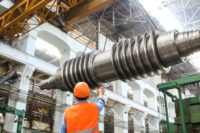Entrepreneurs entering the construction industry are at a unique crossroads, with sustainability becoming arguably indispensable for the sector. As climate concerns rise and regulations tighten, there is a growing demand for green building practices that prioritize energy efficiency, renewable materials, and reduced waste. By starting a green building company, entrepreneurs can meet this demand while contributing to environmental protection.
This shift towards eco-conscious construction responds to escalating environmental concerns, evolving regulations, and growing consumer demand for sustainable living spaces. By focusing on energy efficiency, renewable materials, and the positive effects of sustainability on public health and the environment, new companies can position themselves at the forefront of a transformative movement.
Market trends and opportunities in sustainable construction
The green building sector continues to expand with a voracious appetite, driven largely by growing environmental awareness and economic factors. The good news is this translates to a wealth of opportunities for entrepreneurs entering construction.
As consumer demand grows for energy-efficient homes and commercial spaces, green practices can create a proactive competitive edge in a saturated market. To do so, new building firms should prioritize energy efficiency, renewable energy, and analyzing regulatory compliance to meet shifting customer demands in a more eco-conscious world.
Energy-efficient designs and renewable materials
Entrepreneurs in the construction business should adopt technologies like advanced insulation, energy-efficient windows, and smart climate control systems to realize significant cost savings while reducing their carbon footprint. The use of renewable materials such as bamboo, recycled steel, and engineered wood products is also gaining traction.
Government regulations and consumer preferences
Governments worldwide are enforcing stricter environmental regulations, particularly in the construction industry. For one thing, building codes now emphasize carbon reduction, sustainable materials, and energy efficiency. Entrepreneurs who steer their business models with these regulations in mind can stay ahead of compliance issues while also appealing to consumers who prioritize eco-conscious choices. Regulatory compliance must be balanced with changing customer preferences, which are trending toward sustainability as well.
Renewable energy solutions in building practices
Renewable energy systems are becoming a huge market segment within construction, and smart startups would do well to seize the moment. Solar panel installation, geothermal heating and cooling systems, and small-scale wind turbines offer long-term energy savings for building owners of all sizes. Consider capitalizing on this trend by specializing in renewable energy integration or partnering with established providers to offer more comprehensive green building solutions.
Savvy investing for green building ventures
Investing is a vital part of any business, but in green construction, where sustainability is paramount, investment strategies must also align with eco-conscious goals. Entrepreneurs looking to make a lasting impact while growing long-term profitability should carefully consider where to allocate their capital to drive both business growth and environmental responsibility.
There are many investment strategies to look into, but some are more effective than others. Entrepreneurs should look into capital investing for eco-conscious ventures, cost-effective risk management, and greenifying wasteful fleet operations.
Capital investment strategies for eco-conscious ventures
Key investment strategies for green building entrepreneurs focus on minimizing environmental impact while maintaining profitability. By “buying into the planet” through sustainable investments, entrepreneurs contribute to global ecological efforts while securing their financial future.
Entrepreneurs who want to invest in a sustainable future should consider the following.
- Reduce fossil fuels: invest in renewable energy solutions like solar panels, wind turbines, and energy storage systems to lower dependency on non-renewable energy sources during construction and in finished projects.
- Improve water access: allocate capital toward water conservation technologies such as rainwater harvesting systems, low-flow fixtures, and greywater recycling to meet sustainability standards and reduce water consumption.
- Invest into sustainability: diversify investments by purchasing green mutual funds, environmentally focused exchange-traded funds (ETFs), or other eco-conscious financial products to support larger environmental initiatives while securing financial returns.
Cost-effective risk management in sustainable construction
Managing risks in green building ventures requires a balance between sustainability and cost-efficiency. Entrepreneurs can mitigate financial risks by taking advantage of various incentives, such as government tax credits, grants, and subsidies aimed at promoting eco-friendly construction practices. These help offset the high financial barriers associated with sustainable technologies and building materials.
Greenifying fleet operations
Start the switch to implement green practices by conducting a thorough fleet audit to identify flagrant inefficiencies and your most high-emission vehicles. Switching to electric vehicles can slash your carbon footprint while saving money on transportation. Entrepreneurs can also explore logistics software that optimizes routes and reduces fuel consumption, improving both sustainability and cost efficiency.
The role of eco-conscious construction in health and the environment
Eco-conscious construction is about harmony with the planet, but we can’t forget its importance in protecting public health as well — balance is critical. As climate change intensifies, the building sector must adapt to mitigate its effects and create resilient, healthy living spaces. This ranges from defending against more common extreme weather events such as heat waves to examining the human health element in green construction.
Mitigating health risks from extreme weather and pollution
Climate change can negatively affect public health, whether by chemical pollution or extreme weather events rising in frequency. Health threats range from compromised air quality to sabotaged organ health. Green building measures are a powerful aegis against these forces, which startups can begin using today.
Eco-conscious construction can help mitigate risks like:
- Heat waves: cool roofs, enhanced insulation, and passive cooling design maintain comfortable indoor temperatures in the face of rising global temperatures.
- Air pollution: install high-efficiency air filtration systems and use low-VOC materials to counteract declining air quality, a major factor in causing respiratory illness.
- Extreme weather events: entrepreneurs should build resilient buildings with reinforced structures, elevated critical systems, and water-efficient designs to defend against worsening storms, floods, and droughts.
- Chemical pollution: startups should avoid toxic ”forever chemicals” such as PFAS, which are common in water-resistant paints.
Safety and sustainability in green building
Sustainable practices in construction are inherently safer for workers than unsustainable ones. For instance, the use of non-toxic and environmentally friendly paints, which don’t include hazardous chemicals. However, that’s far from the only example.
Other ways that sustainability drives workplace safety include:
- Indoor air quality: green buildings prioritize ventilation and use low-emission materials that are easier on the respiratory system.
- Natural lighting: daylighting in green design saves energy, improves occupant mood, boosts productivity, and reduces accident risks associated with poor lighting.
- Prefabrication: this common green construction technique improves worker safety by moving more construction work to safer, controlled factory environments.
Final thoughts
Entrepreneurs in the fledgling green building industry have myriad opportunities and challenges ahead of them if they want to become profitable and make a positive impact on the environment. We recommend startups research new opportunities in the market, invest wisely into green causes, and maintain a perspective on their role in the intersection between planet, health, and profit.






